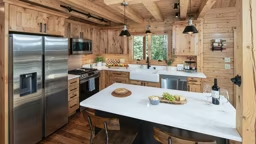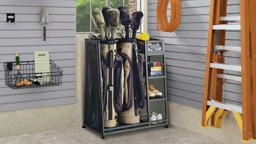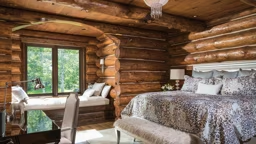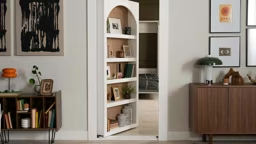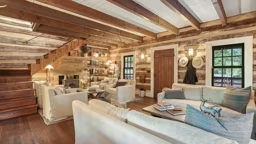
We are all creatures of habit. We have our rituals; our paths we follow. If you could put a tracer on your body, I’d bet you’d find you follow almost exactly the same route every day.
Consider the typical morning routine: You get out of bed, amble to the shower, go back through the bedroom to access your dressers and closet, make way to the kitchen for a cup of coffee and to the great room to turn on the news. Then you head back to the master bath to finish grooming, cross the full length of the house to get to the garage and head out on your way.
When we’re younger, trekking all over the house like this is no big deal – but it becomes quite challenging the older we get.
Instead, think about building your house in a style I like to call “corridor living” — items in a logical sequence intended to streamline your life. Here’s what I mean:
Take the same morning ritual as before. You wake up, but then, on your way to the shower, you stop at your en suite coffee station where you brew a single cup of joe in your Keurig, then make your way to the bathroom, which has direct access to your oversized, custom-designed closet/dressing area. This is where you keep ALL your clothes — underwear, outerwear, socks and shoes — eliminating the need for dressers and armoires. Perhaps your master bath has a TV so you can get a head start on the day’s events while you brush your teeth. Finally, you’re ready to head out, and you haven’t even left the confines of your master suite.
As you’re planning your log home, how you’re going to live in it needs to be defined much more clearly than the square footage you think you’ll need. This mindset switch will help you be more efficient now, but more importantly, it may make the difference between enjoying your home forever or being forced out because it no longer meets your physical requirements.
Here are four ideas I’ve seen work really well in the field that you can apply to your home’s construction:
1. Widen doorways now
This is the easiest and cheapest way to outfit your new log home for your future needs. If you don’t, it’s much more expensive and difficult to enlarge them later.
It won’t cost your builder any more to construct a 36-inch door opening than it will a standard 28- or 30-inch door. Any door that you’re going to use on a frequent basis, (e.g., front door, back door, bedroom and bathroom doors, laundry room door — even your shower door) all of those doors need to be made larger during construction. Even for secondary doors, I don’t recommend going smaller than 32 inches if you’re building your forever home, and here’s why:
It’s not just a matter of enlarging the opening. One thing people don’t factor in is the electrical layout. Your wiring runs near the doorjambs so that light switches will be convenient. If you opt for standard doors now but need wider ones down the line, that wiring will be impacted. Take it from my years of building experience — it’s a pain, and one that can be easily avoided. The price increase to go from a standard door to a wider one is negligible; about $10 to $30 per door, depending on the style you select. Retrofitting could cost 10 times that amount.
See also The Secrets to Floor Plan Perfection
2. Improve laundry room access
We all have laundry. The idea of the oversized laundry/mudroom is ideal for families with a number of active kids who are doing multiple loads of wash each week. This space is usually centrally located so everyone in the household can access it.
But eventually the kids will move out, and with just you and your spouse in the house, the amount of laundry you generate will decrease significantly. This is where a small, stackable washer/dryer in a master closet will really come in handy. Don’t want it in the closet? Design a small laundry-ready space in close proximity to the master and attach to it to some extent, such as with a pocket door that would directly access the master closet from the laundry area.
The key is to plan for it during construction, meaning make sure plumbing lines are run where you need them to go and washer/dryer hook ups are installed while you build. It will be so much easier and more cost effective to plan ahead than retrofit later — even if you won’t use them for years.
See also Money Saving Design Tips
3. Plan for ramp access in inconspicuous places
If you want a ramp on your front entrance, you can figure out a way to make it pretty, like with travertine tile and a fancy handrail, but it will cost you. The ADA standard is a slope maximum of 1:12 (1 inch of rise for every 12 inches in length) and 42 inches wide, so depending on the layout of your property and the way your home will be sited, that ramp could be extensive and expensive.
I have a better idea: Look to the garage.
Most garages are designed very tight, often to the point where you can’t open the car door even partially or it will hit the wall. If you’re thinking about aging-in-place options, you’ll need an extra 2 to 3 feet of space on either side of the vehicle to allow you to get in and out of it and, possibly, into a wheelchair or other walk-assist apparatus. Plus, unless a home is built on a slab, the typical garage is designed with a step (or two) up into the home itself (an average of 14 inches above grade). To convert that to a ramp means it will have to be almost 13 feet long, plus you have to be able to get onto the ramp, so you’ll need an extra 3 to 4 feet of space to maneuver.
Here’s how to resolve these issues: The average width of a two-car garage is 24 feet. Extend that width another 10 to 12 feet to accommodate door swing and the width of the ramp. Position your interior entry door toward the rear wall of the garage and allot the necessary space so that you can place that nice sloping ramp along the side.
Fortunately, because garages are typically framed, not full-log construction, and since they’re not usually conditioned space, it’s cheaper square footage to outfit with a ramp than the log portion of home. It might add a few thousand dollars (a few more roof shingles, a little longer rafter and a bit more concrete) to the total cost, but it’s money well spent. Plus, it will give you tons extra garage storage until you need the ramp, and it will keep your log home’s curb appeal intact.
See also: How to Customize a Stock Plan
4. Construct an elevator shaft
Ten years ago, an in-home elevator was an absolute luxury. Now they are features people are budgeting for in advance, especially as an alternative to the motorized stair-chair, which is not only unsightly, it’s not as safe.
Home elevators are more common than you think. Costs have come down significantly as more people (namely the upper spectrum of the Baby Boom generation) are requesting them. With the infrastructure in place, they’re easy to install, and the track systems have vastly improved. Even if you never need it, it’s wise to plan ahead for this option in the event you do, as retrofitting may be costly or even impossible.
So how do you plan for it? Somewhere near the front or back door or adjacent to the garage, construct a coat closet with a same-sized second-story closet stacked right on top of it. This will create your future elevator shaft but allow you to utilize the space until that time comes. Standard elevator sizes range from 36-by-48 inches to 40-by-54 inches, so frame out the shaft accordingly. Typically, you won’t want to locate an elevator in a central area. Tuck it out of the way, but ensure its mechanisms are easy to access.
It all goes back to where we started: How are you going to live in your home? From the time you pull into your driveway until you lay your head down at night, a forever home is one that satisfies in every sense of the word.
See also: 4 Tips to Build a Perfect Ranch Home




